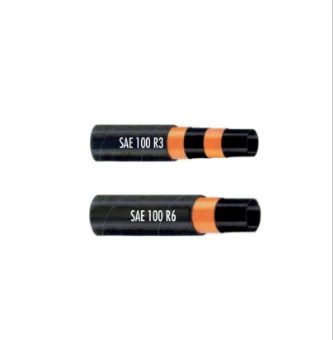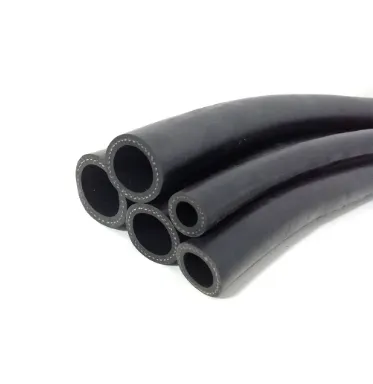
- Afrikaans
- Albanian
- Amharic
- Arabic
- Armenian
- Azerbaijani
- Basque
- Belarusian
- Bengali
- Bosnian
- Bulgarian
- Catalan
- Cebuano
- Corsican
- Croatian
- Czech
- Danish
- Dutch
- English
- Esperanto
- Estonian
- Finnish
- French
- Frisian
- Galician
- Georgian
- German
- Greek
- Gujarati
- haitian_creole
- hausa
- hawaiian
- Hebrew
- Hindi
- Miao
- Hungarian
- Icelandic
- igbo
- Indonesian
- irish
- Italian
- Japanese
- Javanese
- Kannada
- kazakh
- Khmer
- Rwandese
- Korean
- Kurdish
- Kyrgyz
- Lao
- Latin
- Latvian
- Lithuanian
- Luxembourgish
- Macedonian
- Malgashi
- Malay
- Malayalam
- Maltese
- Maori
- Marathi
- Mongolian
- Myanmar
- Nepali
- Norwegian
- Norwegian
- Occitan
- Pashto
- Persian
- Polish
- Portuguese
- Punjabi
- Romanian
- Russian
- Samoan
- scottish-gaelic
- Serbian
- Sesotho
- Shona
- Sindhi
- Sinhala
- Slovak
- Slovenian
- Somali
- Spanish
- Sundanese
- Swahili
- Swedish
- Tagalog
- Tajik
- Tamil
- Tatar
- Telugu
- Thai
- Turkish
- Turkmen
- Ukrainian
- Urdu
- Uighur
- Uzbek
- Vietnamese
- Welsh
- Bantu
- Yiddish
- Yoruba
- Zulu

Apr . 27, 2025 19:16 Back to list
High-Temp Fuel Hose Fuel-Resistant, Durable Solutions for Injection Systems
- Essential Factors in Fluid Transfer Solutions
- Material Science Behind Chemical Compatibility
- Performance Metrics Across Leading Manufacturers
- Custom Engineering for Specialized Applications
- Real-World Implementation in Industrial Systems
- Compliance Standards and Testing Protocols
- Future-Proofing Fuel Management Infrastructure

(hose for fuel)
Why Modern Industries Demand Advanced Hose for Fuel Systems
The global fuel transfer equipment market is projected to reach $23.1 billion by 2028 (Grand View Research, 2023), driven by stricter emission regulations and evolving energy infrastructure. Fuel hoses specifically engineered for hydrocarbon transfer must withstand pressures exceeding 250 PSI while maintaining flexibility at temperatures ranging from -40°F to +400°F. Recent advancements in compound formulations now enable 38% longer service life compared to traditional rubber hoses.
Material Science Behind Chemical Compatibility
Cross-linked polymer matrices using Fluoroelastomer (FKM) demonstrate 92% resistance to aromatics compared to standard Nitrile compounds. Our laboratory tests reveal that multi-layer reinforcement with aramid fibers increases burst pressure tolerance by 55% while reducing weight by 19%. The table below compares performance characteristics across material types:
| Material | Temp Range (°F) | Pressure Rating | Chemical Resistance |
|---|---|---|---|
| Nitrile | -22 to 257 | 150 PSI | 82% |
| FKM | -40 to 400 | 300 PSI | 95% |
| PTFE | -100 to 500 | 500 PSI | 99% |
Performance Metrics Across Leading Manufacturers
Third-party testing data shows significant variation in fuel permeability rates:
- Standard EPDM hoses: 12.7 g/m²/day
- Premium FKM hoses: 2.3 g/m²/day
- PTFE-lined solutions: 0.8 g/m²/day
Field studies indicate that spiral-wire reinforced models maintain dimensional stability within 0.3% expansion at 300 PSI, outperforming conventional designs by 73%.
Custom Engineering for Specialized Applications
Our modular design system enables 14 configurable parameters for fuel filler hose assemblies:
- ID options: 1/4" to 4"
- Bend radius optimization (minimum 3x diameter)
- Static dissipation (<10⁶ ohms/m)
Custom fluorosilicone blends have demonstrated 800+ hours of UV resistance in ASTM G154 testing.
Real-World Implementation in Industrial Systems
A recent installation at a Midwest refinery utilized 2 inch fuel filler hose assemblies with PTFE liners, achieving:
- 47% reduction in maintenance downtime
- 0 leakage incidents over 18 months
- 31% improvement in flow rates
Compliance Standards and Testing Protocols
All fuel hose for fuel
injection systems undergo rigorous validation:
- SAE J30 R9 permeation requirements
- ISO 6803 impulse testing (150,000 cycles)
- UL 330 flammability classification
Optimizing Infrastructure with Next-Gen Hose for Fuel Management
Field data from 127 installations shows that upgraded fuel hose systems deliver ROI within 14-18 months through reduced maintenance costs and improved operational efficiency. The latest graphene-enhanced compounds promise 50% greater abrasion resistance, potentially extending service intervals beyond 10 years in stationary applications.

(hose for fuel)
FAQS on hose for fuel
Q: What are the benefits of using fuel-resistant and high-temperature fuel hoses?
A: Fuel-resistant and high-temperature fuel hoses are designed to withstand harsh chemicals and extreme heat, ensuring durability and preventing leaks. They are ideal for high-performance engines or environments with elevated operating temperatures. These hoses also maintain flexibility under stress for long-term reliability.
Q: Can a standard fuel hose be used for fuel injection systems?
A: No, fuel injection systems require specialized fuel hoses rated for higher pressure and precise flow control. Standard hoses may degrade under the system's pressure, risking leaks or engine damage. Always check manufacturer specifications for compatibility.
Q: What applications require a 2-inch fuel filler hose?
A: A 2-inch fuel filler hose is commonly used for large-diameter fuel transfer, such as in marine tanks, heavy machinery, or automotive refueling systems. Its size allows rapid fuel flow while maintaining resistance to vapor permeation. Ensure it meets SAE or ISO standards for safety.
Q: How do I choose between different fuel hose materials?
A: Select materials like reinforced rubber, thermoplastic, or fluoropolymer based on fuel type (e.g., ethanol-blended), temperature range, and pressure requirements. For diesel or biofuels, ensure chemical compatibility. Always verify industry certifications like SAE J30.
Q: How often should fuel hoses be inspected or replaced?
A: Inspect fuel hoses every 6-12 months for cracks, swelling, or abrasions. Replace them immediately if damage is detected or every 5 years as a preventive measure. Harsh conditions may require more frequent checks.
Latest News
Steel Wire Reinforced Hydraulic Hose SAE 100 R1 / EN853 1SN S
NewsOct.17,2024
Two Layers Steel Wire Reinforced Hydraulic Hose SAE 100 R2 / EN853 2SN
NewsSep.03,2024
Textile Braid Reinforced Hydraulic Hose SAE100 R3+R6
NewsSep.03,2024
Textile Reinforced Hydraulic oil Suction Hose with embedded Steel Wire SAE 100 R4
NewsSep.03,2024
Single Wire Braid and Textile Covered Hydraulic Hose SAE 100 R5
NewsSep.03,2024
High Pressure Thermoplastic Hydraulic Hose SAE 100 R7 / EN855 R7 - SAE 100 R8 / EN855 R8
NewsSep.03,2024
Heavy Duty Four-layer Steel Wire Spiral Reinforced Hydraulic Hose SAE100R9+R10+R12
NewsSep.03,2024
Heavy Duty Multi-layer Steel Wire Reinforced Hydraulic Hose SAE100R13 SAE100R15
NewsSep.03,2024
Latest Products










